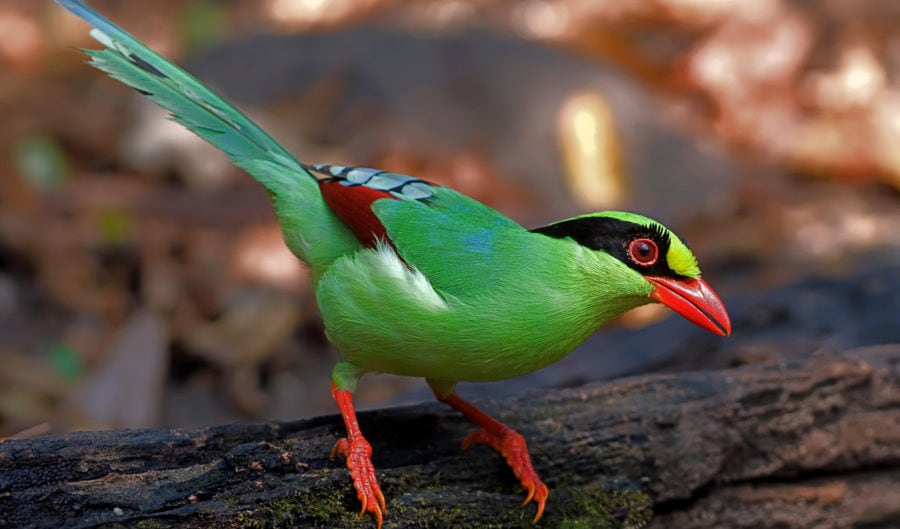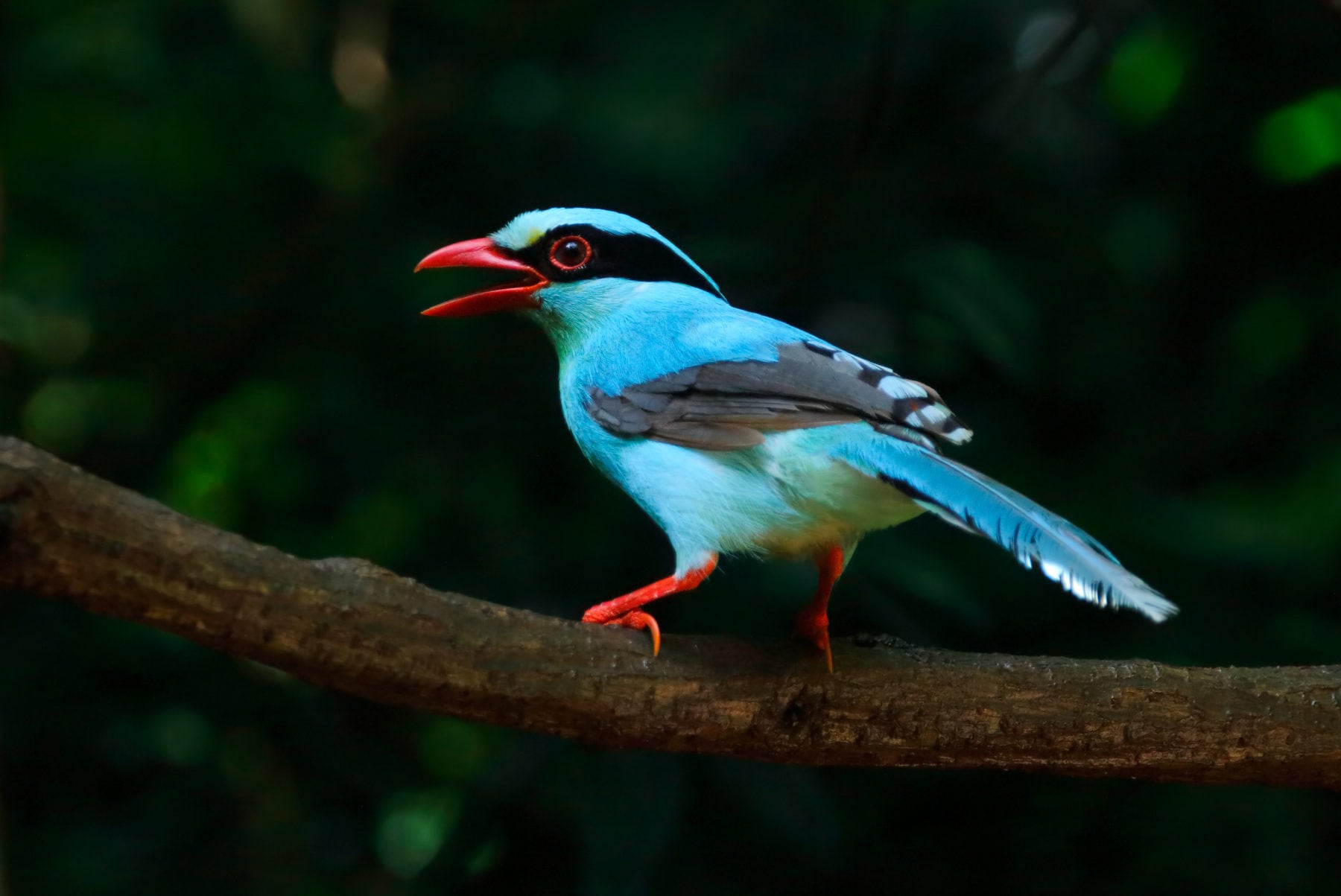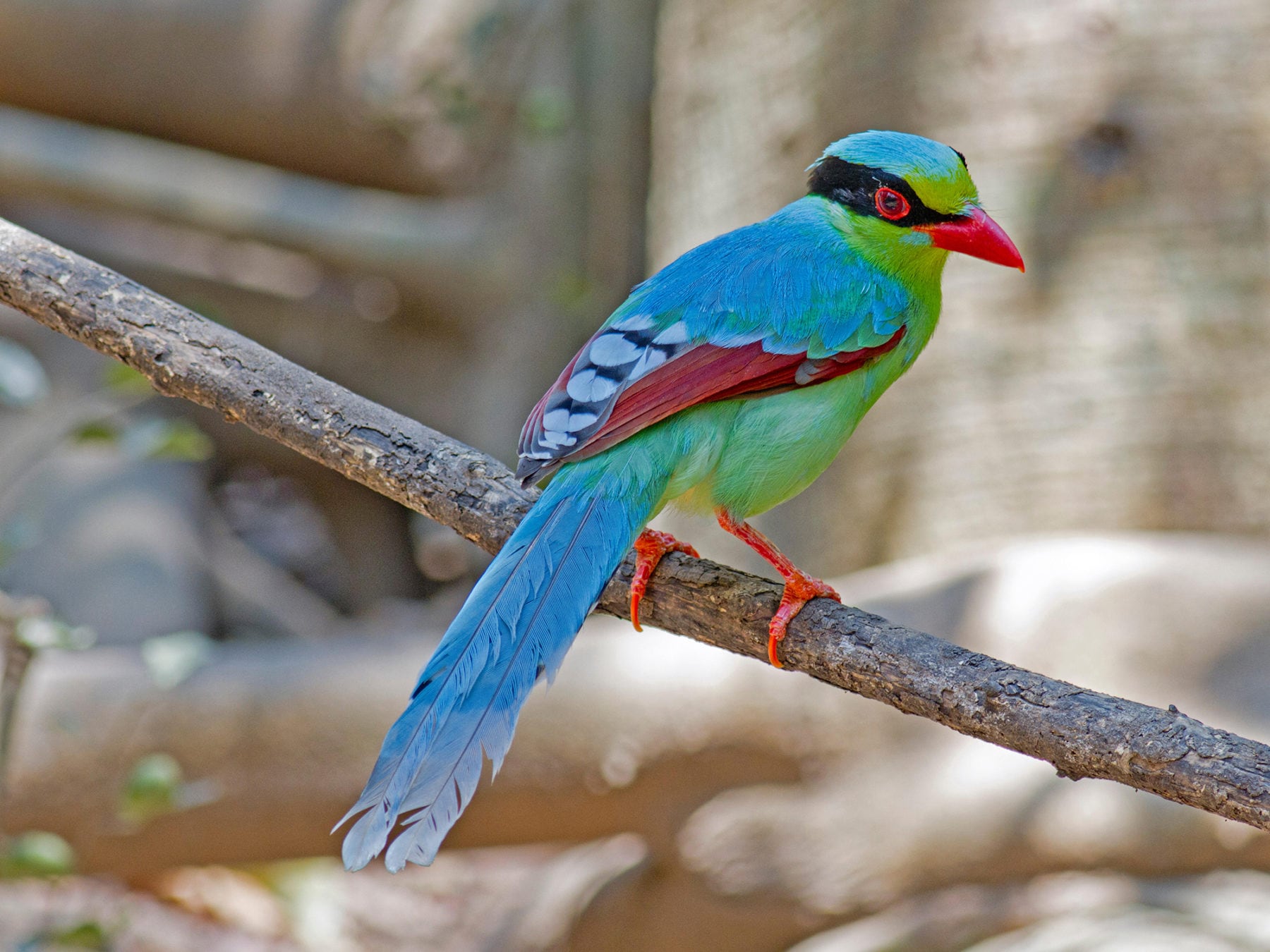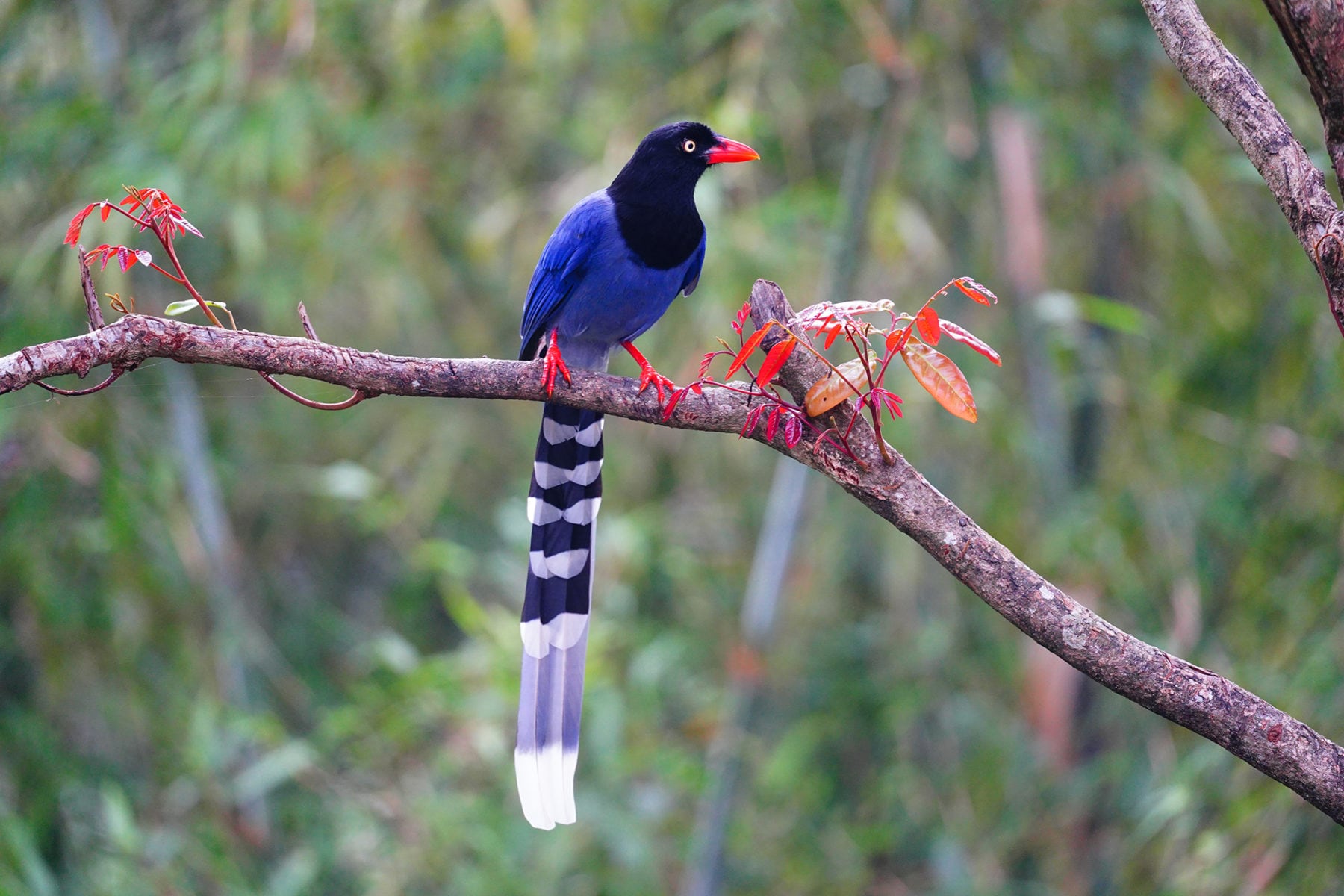The common green magpie is anything but

Bec Crew
Bec Crew

FOUND THROUGHOUT Southeast Asia, including in India, Thailand, Malaysia, Sumatra, and Borneo, the common green magpie (Cissa chinensis) is resplendent in its jewel-toned finery. With jade-coloured plumage contrasting beautifully with its red beak and limbs, and a striking black band running along its eye like a bandit, this bird is brimming with personality.
Noisy and highly social, they are voracious carnivores. Nicknamed hunting cissas, which refers to their genus name (Cissa), they seek out insects, reptiles, small mammals, and young birds and eggs as food.
What’s fascinating about this species is the way it’s able to change colours.
In captivity, people have observed common green magpies turning distinctly turquoise, possibly due to higher exposure to sunlight because of the lack of forest cover, or due to a lack of carotenoids in their diet – yellow, orange, and red pigments that naturally occur in their food and affect their plumage.
Just like how carotenoid-rich foods affect the plumage of flamingos, if the common green magpie doesn’t get the diet it has access to in the wild, it tends to look like this:

Again, stunningly beautiful. These birds also reportedly lose their green colour and turn blue when they die.
Here’s one in a transition period:

When it comes to colourful magpies, the common green magpie isn’t the exception – there are many species from Asia and Southeast Asia that are gorgeous to look at.
The Taiwan blue magpie (Urocissa caerulea), also known as the long-tailed mountain lady, is endemic to Taiwan, and is known for its luxurious tail, which is twice as long as its body and striped with white and dark plumage.

These birds are not shy and are more than happy to mess with humans, just like other magpies we know.
They’re also super chill at times, as this footage of someone petting a Taiwan blue magpie (and making us very jealous) shows:

